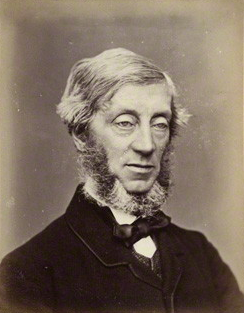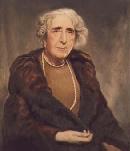
Crediton is a town and civil parish in the Mid Devon district of Devon in England. It stands on the A377 Exeter to Barnstaple road at the junction with the A3072 road to Tiverton, about 7 miles (11 km) north west of Exeter and around 14 miles (23 km) from the M5 motorway. It has a population of 8,304. However, the combined population of the parishes that make up the Crediton area is estimated to be 21,990.

General Sir Redvers Henry Buller, was a British Army officer and a recipient of the Victoria Cross, the highest award for gallantry in the face of the enemy that can be awarded to British and Commonwealth forces. He served as Commander-in-Chief of British Forces in South Africa during the early months of the Second Boer War and subsequently commanded the army in Natal until his return to England in November 1900.

The Bishop of Exeter is the ordinary of the Church of England Diocese of Exeter in the Province of Canterbury. Since 30 April 2014 the ordinary has been Robert Atwell.

Copplestone is a village, former manor and civil parish in Mid Devon in the English county of Devon. It is not an ecclesiastical parish as it has no church of its own, which reflects its status as a relatively recent settlement which grew up around the ancient "Copleston Cross" that stands at the junction of the three ancient ecclesiastical parishes of Colebrooke, Crediton and Down St Mary.

Crediton United Association Football Club is a football club based in Crediton, Devon, England. They are currently members of the South West Peninsula League Premier Division East and play at Lords Meadow.

William Reginald Courtenay, 11th Earl of Devon PC, styled Lord Courtenay between 1835 and 1859, was a British politician who served as Chancellor of the Duchy of Lancaster from 1866 to 1867 and as President of the Poor Law Board from 1867 to 1868.

Urith was a Christian woman from the Westcountry of Great Britain who was alleged to have been martyred in the 8th century, and subsequently revered as a saint. The name is still common in the English county of Devon. Her feast day is 8 July and her shrine is located in the North Devon village of Chittlehampton. Her name is also known in Latin as Hieritha and occasionally corrupted to Erth.

Posbury is an ancient estate in Devon, now a hamlet, situated about 2 miles south-west of Crediton and 2 miles north of Tedburn St Mary and 1 mile west of the small hamlet of Venny Tedburn.

Dame Audrey Charlotte Georgiana Buller was a British hospital administrator and the founder of the first school dedicated to occupational therapy in the United Kingdom.

Crediton Parish Church, formally the Collegiate Church of the Holy Cross and the Mother of Him who Hung Thereon, is a prominent building and worshipping community in the Devon town of Crediton. The church is built on the site of what was the "cathedral" of the Bishop of Crediton in the former diocese until 1050 when the see was transferred to Exeter. A college of canons remained at Crediton, administering the buildings and life of the "collegiate" church. The nave and chancel of the current building date from the 15th century. At the English Reformation the church was surrendered to Henry VIII in 1545, and the college dispersed. The church buildings were bought by the Crediton Town Corporation who still administer the fabric today. Now a parish church, the life of the church is administered by the parochial church council (PCC), although many still refer to the church as the Collegiate Church of the Holy Cross.
William Birnie Rhind RSA (1853–1933) was a Scottish sculptor.

James Wentworth Buller of Downes, Crediton, Devon, was a British Whig Member of Parliament for Exeter, in Devon, from 1830 to 1835, and for North Devon from 1857 to 1865.

Edward Bowring Stephens, was a British sculptor from Devon. He was honorary secretary of the Institute of Sculptors circa 1861.

Downes House is situated about one mile east of Crediton in Devon. The house is an 18th-century Palladian re-modelling of an earlier house. It was classed Grade II* listed on 20 May 1985. Nearby is the site of a Roman villa, revealed by crop-marks as a rectangular enclosure containing a winged-corridor structure. In 2012 the estate comprised 1400 acres, including the Home Farm, Fordton Barton, Uton Barton, Dunscombe Farm and other land 110 acres and parkland.

The statue of the Earl Kitchener is an outdoor bronze statue by John Tweed depicting Herbert Kitchener, 1st Earl Kitchener, installed in 1926 and located on the south side of Horse Guards Parade in London, United Kingdom. The sculpture stands on a Portland stone plinth. It became a Grade II listed building in 1970.

Creedy is an historic estate in the parish of Sandford, near Crediton in Devon. It is named from its location on the west side of the River Creedy. It was the seat of the Davie family from about 1600 until the late 20th century. The mansion house on the estate has been called at various times New House, Creedy House, and as presently, Creedy Park. It was first built in about 1600, rebuilt in 1846, burnt down in 1915 and rebuilt 1916–21. It is surrounded by a large park, the boundary of which is enclosed by a stone and brick wall several miles long.

The Royal Artillery Boer War Memorial is located on the south side of The Mall in Central London, close to the junction with Horse Guards Road at the northeast corner of St James's Park. Unveiled in 1910, it marks the deaths of the 1,083 soldiers of the Royal Artillery who died in the Second Boer War from 1899 to 1902 It has been a listed building since 1970.

Streatham War Memorial is a war memorial to the war dead of the London district of Streatham in the two World Wars. It was unveiled in 1922, and is sited near the northwest corner of Streatham Common.
Onslow Ernest Whiting was an English sculptor and teacher.

The Gladstone Memorial on the Strand, London is a bronze sculpture of the British statesman, created by Hamo Thornycroft between 1899-1905. The statue was erected as the national memorial to Gladstone and shows him in the robes of the Chancellor of the Exchequer. The figure stands on a plinth surrounded by allegorical figures depicting four of the Virtues, Courage, Brotherhood, Education and Aspiration. The memorial is a Grade II listed structure.





















